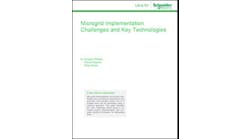Boston is developing a trigeneration microgrid for its waterfront. Credit: Wikimedia
The light bulb left burning in the empty room stands as the classic image of energy waste. But the new image may soon be steam wafting on a city skyline, as district energy advocates step up their efforts to make known the big cost to society of wasted heat.
That’s one of the messages emerging this week at IDEA2015, the International District Energy Association’s (IDEA) annual conference, where almost 900 district energy advocates (a record for the event) gathered in Boston. The participants came from 39 US states and 21 countries.
Speakers described what appears to be a new period of opportunity for a technology that is centuries old, yet less known, at least in non-energy circles, than the LED light or solar panel.
Why now for district energy? Governments are looking for big carbon reduction plays. And at the same time, and the smart city concept is coming to the fore. Both of these trends lend themselves to district energy. These systems capture large amounts of wasted heat and re-channel it through piping systems to heat and cool buildings, make hot water, or create steam for industrial processes.
“You really cannot achieve the full potential of energy efficiency without heat networks,” said Lily Riahi, an adviser to the United Nations Environmental Program, speaking at the conference. “There is so much waste heat from data centers, waste water treatment plants, metro systems, industry, CHP plants. There is so much waste heat that can be used and leveraged, and it’s a free resource.”
Those in the energy industry are well aware of the efficiencies won through district energy, especially when it is coupled with combined heat and power. But for city officials who are just beginning to weigh carbon reduction strategies, the figures are likely to be surprising. A typical coal-fired plant wastes about two thirds of its fuel to heat, a byproduct of the power production process. The wasted heat heads into the sky or gets dumped into bays and rivers. The problem is particularly profound in the energy-intensive U.S. where the amount of waste heat exceeds the total national energy use of all but three of 216 countries, according to a video produced by IDEA.
Speakers at the conference described a new convergence in thinking about clean energy systems that brings together both heat and electricity. Renewables, alone, they said are unlikely to achieve the carbon reductions sought by governments.
“There are many things driving this convergence,” said Ken Smith, president and CEO of Ever-Green Energy and IDEA chairman. “The cities and the citizens in them are demanding more efficient, sustainable, low carbon, equitable and affordable solutions to serve their future.”
The convergence will take place “in our cities where most of the built environment is and where much of our carbon emissions is coming from,” he added.
In the Northeast US, hit hard by Superstorm Sandy in 2012, resiliency also is a rallying cry for district energy, especially when the system includes a microgrid that can island and keep power flowing to buildings when a grid outage occurs. But ultimately, it may be the promise of lower energy costs that drives a new boom in district energy.
That’s the case in Boston, which now has a dedicated district energy planner on staff, and is integrating plans for the technology into its first comprehensive city-wide plan undertaken in 50 years.
The plan includes a new marine industrial park at the city’s port with an islandable trigeneration district energy microgrid. The city is working on the project with two local utilities, EverSource and National Grid.
“The real driver of this is lower total cost in energy. We’re hoping to get between 10 and 30 percent lower total cost of energy for the tenants of our marine park,” said Austin Blackmon, Boston’s chief of environment, energy and open space. “That is massively important. We are in a building boom. We are in an innovation boom. We are attracting businesses from around the world. If we are able to really deliver the lower total cost of energy in a concrete way we will have a new paradigm where district energy, islandable microgrids are part of the future.”
So while much of today’s energy efficiency effort remains focused on power, expect to hear more and more about the heat as cities increasingly craft their own smart energy plans.
Learn more about community microgrids, district energy and combined heat and power by reading MicrogridKnowledge.com’s new guide, “What Mayors and City Leaders Need to Know about Community Microgrids,” available as a free download courtesy of the International District Energy Association and OBG.







